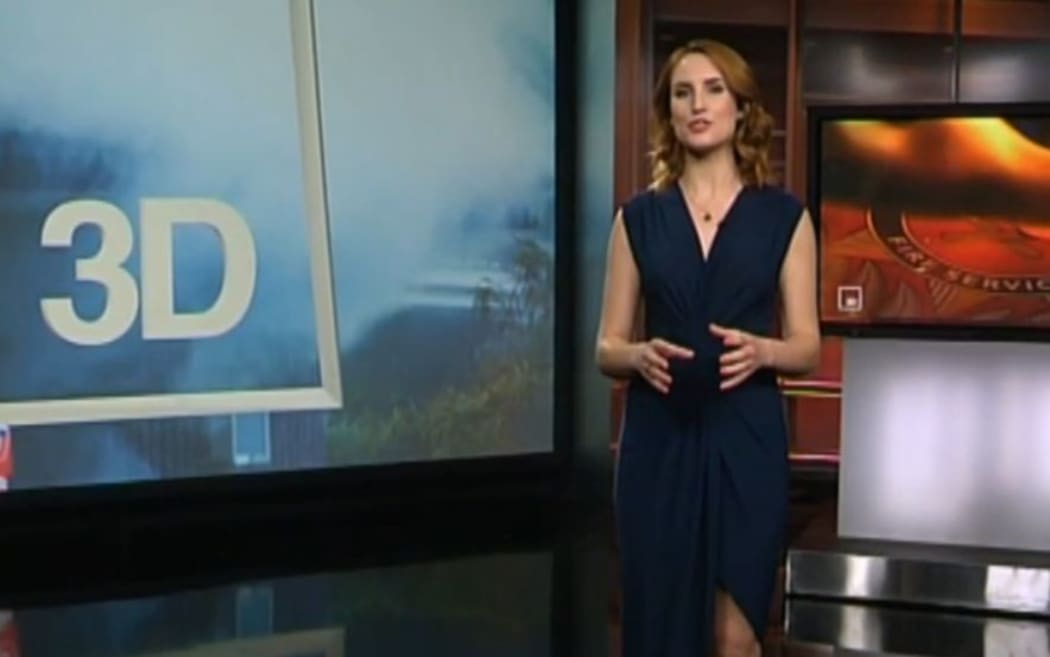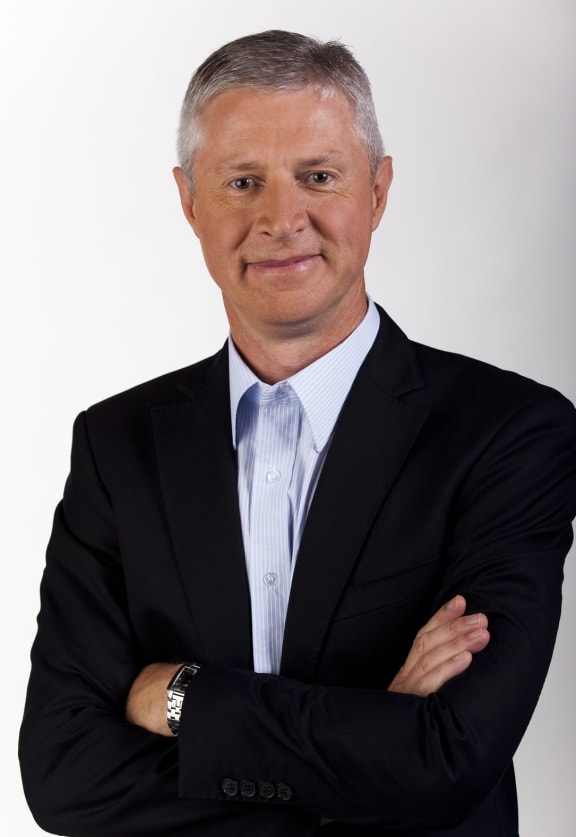Follow Mediawatch on Twitter
TV3 has confirmed the canning of its weekly current affairs show 3D. Its owner Mediaworks said the show couldn't pay its way in a tough TV market, even with public funding. State-owned TVNZ has more viewers and more income. Mediawatch asks the news boss at TVNZ if it is still committed to costly current affairs shows - or likely to follow TV3's lead.

A screenshot of Samantha Hayes introducing an investigation into allegations of bullying in the Fire Service. Photo: Mediaworks / TV3
TV3 has confirmed this week its current affairs show 3D will not return next year after two final episodes which will screen before Christmas. This was no surprise.
Last month its owner Mediaworks said it was "under review" and head of news Mark Jennings said in a statement:
Long-form current affairs is challenging to make commercially viable. Given the way media consumption habits are changing, unfortunately continuing 3D may not be possible.
It was all over bar the shouting at that point, and there was a fair bit of shouting from fans of TV3's well-regarded current affairs programmes who were already inflamed by the axing of Campbell Live earlier in the year.
Following the standard HR playbook, there was a period of consultation with staff, but they were given less than a week to put forward an alternative proposal to save the programme. RNZ understands 3D staff are disputing the grounds for closing the programme and are considering joint legal action. Staff say they can't comment on the matter while they are still employed by the company, and no-one at the Mediaworks' management is prepared to talk either.
What, if anything, will replace 3D's output? The statement announcing 3D's closure said . . . :
The challenge now is to explore new ways to deliver high quality investigative journalism
True enough, but that's pointedly not a commitment to meet that challenge - and deliver any investigative journalism.
Track record

Mark Jennings – Newsroom.co.nz co-editor. Photo: MediaWorks
The 3D programme certainly did while it lasted.
Bullying in the fire service, shortcomings at EQC in Christchurch, failures in a fatal Fox Glacier aircrash investigation, a fuller picture of how solders died in the NZDF's worst firefight since the Vietnam War: those were all stories 3D covered in prime time in recent months.
Reporter Paula Penfold and producer Eugene Bingham were on the case of Teina Pora as far back as the days when the programme was still called 60 Minutes. Teina Pora's supporters say he might still be wrongfully imprisoned without their reporting.
Even if you didn't watch 3D, you may well have seen news stories about their revelations on the 6pm news. You may have read about them in your newspaper, or online in a story by another journalist working for another media organisation.
You may even be glad that other people got see to those investigations, even if you weren't interested.
The government's broadcasting funding agency New Zealand on Air gave TV3 more than $500,000 for investigative reports on 3D this year after Mark Jennings warned investigative TV journalism was becoming financially unsustainable. But this helping hand from the taxpayer wasn’t enough to persuade TV3 to persist with the programme.
Last month chief executive Mark Weldon told staff “the numbers do not lie” and news had not delivered for the company. Mediaworks was recently in receivership and still has pressing financial problems - and demanding shareholders. It has no obligation to produce costly current affairs.
What about state-owned TVNZ?
Before the TVNZ Charter was scrapped in 2011, the government gave TVNZ between 12 and 17 million dollars a year - so-called Charter Money - to screen programmes they hoped would fit the bill. TVNZ was obliged to ask viewers what they wanted. From 2003 to 2009, TVNZ's annual reports from the time showed the overwhelming majority wanted independent and credible news and current affairs, even if they didn't watch it themselves.
In 2008, TVNZ put it this way:
While someone may, as a viewer, not like a particular programme they may, as a New Zealand citizen, appreciate that TVNZ shows such programmes.
There's no Charter any more, but the TVNZ Act still says:
TVNZ must provide high-quality content that is relevant to, and enjoyed and valued by, New Zealand audiences
Today, TVNZ is a commercial broadcasting company much like Mediaworks. Its shareholder - the government - also wants financial returns. Does it plan to retreat from costly current affairs too?
TVNZ news and current affairs chief John Gillespie told Mediawatch its current affairs show Sunday is commercially viable. So is Fair Go, he says, while other channels has stopped screening consumer shows which used to cover similar ground, and required real journalism and research. TVNZ also has Q+A, dedicated to politics, but it only screens off-peak with funding from New Zealand On Air.
"I don't want to get out of longform content, but it does have to be commerically viable," he says.
If New Zealand on Air has signalled a willingness to back investigative journalism on TV with public money today, and New Zealand citizens probably still like the idea of it on TV, will TVNZ meet the demand with another programme to fill the void left by 3D?
"Currently the answer is 'no'. but that doesn't mean it couldn't happen. It's been discussed by a management team but we haven't got there yet. It would have to be on top of our current suite of shows," he says.

